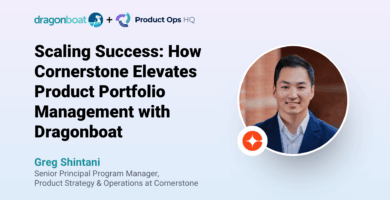Events • On Demand | Watch Time: 17 min
Achieving Product Velocity – What Is It and How to Achieve It
ACCELERATE 2023: Virtual Summit for Product Leaders by Dragonboat
Osama Bedier is the President of GoDaddy Commerce, as well as an expert on Product Velocity. In his talk at ACCELERATE 2023, he challenges the notion that speed alone equates to progress. True velocity means moving fast towards a specific outcome, not merely spinning in circles at breakneck speed.
Osama also revealed that a substantial 80% of work is often unnecessary. The real key is to identify this unnecessary work early in the process to avoid wasted efforts.
Watch Osama’s session on-demand now, and learn what product velocity is and how to achieve it.
Featured Speaker

Osama Bedier
President of GoDaddy Commerce
Entrepreneur and investor with extensive experience starting and scaling product and businesses in consumer internet, commerce and the payments space. Before joining GoDaddy, Osama founded Poynt and Google Wallet.


